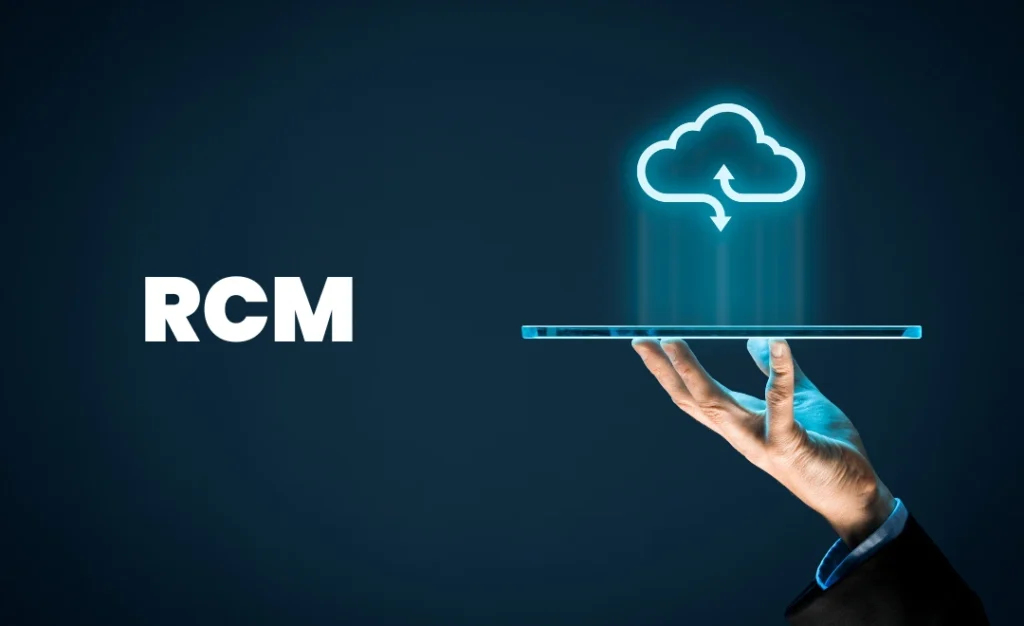Revenue cycle trends in 2025 are set to reshape how healthcare organizations manage their finances.
Revenue cycle trends are evolving quickly, driven by technology, patient needs, and new regulations.
This article highlights the key revenue cycle trends that will impact healthcare finance, helping providers stay ahead and maintain stability in the coming years.
1. The Rise of AI in Revenue Cycle Management

AI is becoming more important in healthcare and will change revenue cycle trends. By 2025, healthcare providers will use AI to help with tasks like coding, processing claims, and handling payments. This will make these tasks faster and more accurate.
How AI Will Change RCM:
- Smarter claims handling: AI helps find and fix issues with claims before submission, improving approval rates.
- Faster payments: With automation, claims will be processed faster, so providers get paid sooner.
- Fewer errors: AI will help reduce coding mistakes, which can lead to claim denials.
AI will support revenue cycle trends by making processes quicker and more accurate.
2. Predictive Analytics: Spotting Issues Before They Arise
Predictive analytics is becoming essential for future revenue cycle trends. By 2025, healthcare providers will use predictive tools to find potential problems and fix them before they cause delays.
How Predictive Analytics Will Help:
- Preventing denials: Predictive models will catch at-risk claims early, so providers can fix them before submission.
- Better cash flow: Fixing issues early speeds up payments.
- Better decisions: Predictive analytics helps providers make smarter decisions based on data.
Predictive analytics will help providers stay on top of revenue cycle trends, leading to faster payments and fewer errors.
For more on the impact of predictive analytics, check out this article on predictive analytics in healthcare.
3. Blockchain for Secure and Transparent Billing

Blockchain will change revenue cycle trends by making billing more secure and clear. By 2025, blockchain will be used to keep records safe and transparent, reducing fraud and increasing trust in healthcare billing.
Blockchain Benefits in RCM:
| Benefit | Description | Impact on RCM |
|---|---|---|
| Data protection | Blockchain keeps financial data safe from unauthorized access. | Reduces fraud and builds trust. |
| Transparency | Blockchain records every transaction on a shared ledger. | Reduces billing issues and disputes. |
| Faster processing | Blockchain cuts out middlemen, speeding up claims verification. | Providers get paid faster. |
Blockchain will make revenue cycle trends more secure and efficient, improving the billing process.
4. Patient-Centered Billing: Making the Process Clearer
As patients take on more of their healthcare costs, revenue cycle trends will shift toward clearer, patient-friendly billing. By 2025, providers will need to offer simple, transparent billing options to meet patient needs.
Why This Is Important:
- Clear pricing: Giving patients an idea of what they’ll owe upfront will make it easier to manage costs.
- More ways to pay: Allowing patients to pay in installments or choose other options will reduce delays.
- Easy access to billing information: Patient portals let patients check their status, coverage, and payments.
This shift to patient-centered billing will help providers collect payments faster and reduce unpaid bills.
5. The Continued Growth of Telemedicine and RCM Integration
Telemedicine and Revenue Cycle Management Integration
Telemedicine will continue to grow, and by 2025, it will be a key part of healthcare. To keep up, providers need to add telemedicine billing to their revenue cycle trends, ensuring they get paid correctly for virtual visits.
Important Aspects of Telemedicine Billing:
- Correct coding: Telemedicine has its own codes that providers need to use for proper reimbursement.
- Staying up-to-date: Providers need to be aware of changing rules for telemedicine reimbursement.
- Linking telemedicine to RCM: Telemedicine billing needs to fit into the overall revenue cycle system for consistency.
Telemedicine will influence revenue cycle trends, and healthcare providers need to be ready to handle virtual care billing properly.
For more insights on telemedicine reimbursement, read this article on telemedicine reimbursement.
6. Cloud-Based RCM Solutions: Efficiency and Scalability

Cloud-based revenue cycle management (RCM) systems are becoming more popular because they’re flexible and easy to scale. By 2025, most healthcare organizations will rely on cloud solutions to improve their processes and reduce costs.
Benefits of Cloud-Based RCM:
| Benefit | Description | Impact on RCM |
|---|---|---|
| Scalability | Cloud solutions can grow with your organization’s needs, without large upfront costs. | Helps providers adjust to new revenue cycle trends. |
| Quick access to data | Cloud systems allow instant access to billing and financial data. | Speeds up decision-making and increases responsiveness. |
| Security | Cloud providers offer encryption and compliance with regulations like HIPAA. | Ensures data protection, supporting trust in revenue cycle trends. |
Cloud-based systems will allow healthcare organizations to keep up with evolving revenue cycle trends and stay agile.
7. The Shift to Value-Based Care Models
With value-based care, providers are paid based on the quality of care rather than the number of services. This shift will be central to revenue cycle trends by 2025, and providers will need to adjust their billing practices accordingly.
What This Means for RCM:
- Outcome-based reimbursement: Providers need to show evidence of patient outcomes to receive payment.
- Care coordination: Working together across teams will lead to better patient outcomes.
- Staying current: Providers must stay updated with new value-based care requirements.
Value-based care will guide revenue cycle trends, encouraging providers to focus on patient outcomes and quality.
8. Denial Management: Streamlining Processes
Handling claim denials remains a challenge for providers. However, by 2025, automation and analytics will help healthcare organizations address denials quickly, supporting smoother revenue cycle trends.
How Automation Helps in Denial Management:
- Spotting patterns: Automation helps identify common causes of denials, so providers can fix them faster.
- Quicker resolutions: Automated denial workflows help address issues promptly.
- More approvals: By fixing errors ahead of time, fewer claims will be denied.
Automating denial management will allow healthcare organizations to stay ahead of revenue cycle trends and speed up payments.
9. Cybersecurity and Data Protection in RCM

As healthcare moves to digital systems, protecting patient and financial data is more important than ever. By 2025, cybersecurity will be critical to protecting data from breaches and attacks, especially in revenue cycle trends.
Key Security Measures for RCM:
- Data encryption: Encrypting sensitive data helps protect it from cyberattacks.
- Secure payment processing: Using reliable systems for payments reduces fraud.
- Staying compliant: Providers must follow HIPAA and other rules to protect patient data.
As cybersecurity becomes even more vital, it will support the continued development of revenue cycle trends.
10. Outsourcing RCM: Boosting Efficiency
Outsourcing revenue cycle management (RCM) is becoming more popular as healthcare organizations look to improve efficiency. By 2025, many providers will choose to outsource billing, coding, and collections to third-party experts.
Why Outsourcing RCM Works:
- Lower costs: Outsourcing reduces the need for in-house staff, cutting costs.
- Specialized knowledge: RCM experts know billing, coding, and reimbursement rules, ensuring greater accuracy.
- Better focus on patient care: With RCM handled externally, healthcare providers can focus on improving patient outcomes.
Outsourcing RCM will help organizations stay competitive and keep up with evolving revenue cycle trends.
Conclusion: Staying Ahead with Revenue Cycle Trends
The revenue cycle trends in 2025 will be shaped by new technologies, patient-centered care, and changes in how providers are reimbursed. By adopting tools like AI, predictive analytics, blockchain, and telemedicine, healthcare organizations can handle claims faster, reduce errors, and improve patient satisfaction.
Staying ahead of these revenue cycle trends will be crucial for the long-term success of healthcare providers. For more information on how to optimize your revenue cycle, visit our Revenue Cycle Services.

